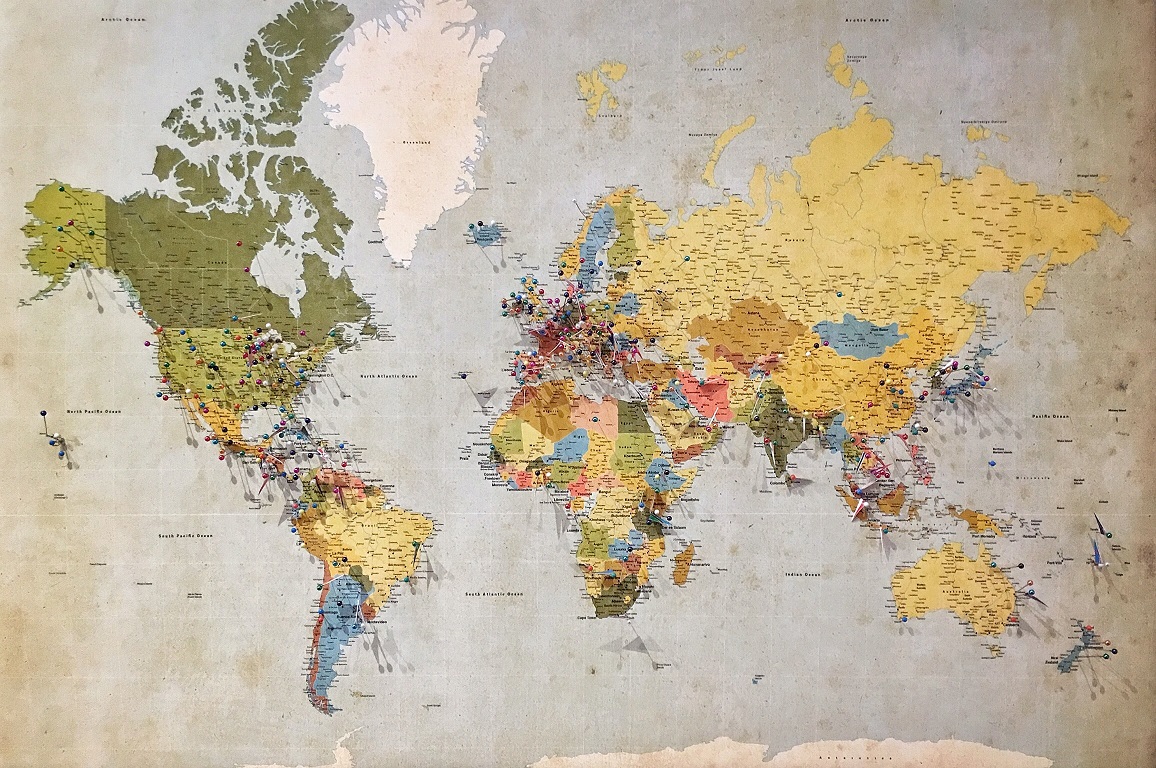With social justice language on the rise, the terms “Global North” and “Global South” are increasingly being used as descriptors for economically wealthy and “poor” countries, respectively. Global North is synonymous with First World and “developed” while Global South is interchanged with “Third World” and “developing.”
Using the Three World and development models to describe high-versus-low-income countries was more common in the past. However, as social consciousness and politically correct language proliferates, Global North and Global South are favoured because the words themselves contain no inherent value judgments. Typically, one can assume the Global North to encompass North America, Western Europe, Australia, New Zealand, and parts of East Asia, while “Global South” refers largely to countries in Africa, Latin America and the rest of Asia.
Where did these terms originate, anyway?
 Photo by Timo Wielink on Unsplash
Photo by Timo Wielink on Unsplash
The First, Second and Third World terms were coined by Alfred Sauvy in the 1950s in an article titled Three Worlds, One Planet. During the Cold War, the Three World Model was a way of distinguishing the United States, Western Europe and their allies (the First World) from communist countries (the Second World) and everyone else (the Third World). At the time, a collection of nations labelled as Third World happened to be experiencing acute poverty which is how the term became associated with “poor” countries.
The origins of describing countries by development status also dates back to the mid-20th century and was first used in Walt Whitman Rostow’s work, The Stages of Economic Growth: A Non-Communist Manifesto. In the book, Rostow argues all countries experience stages of development, starting out as underdeveloped and progressing toward developed.
Are the terms Third World and developing derogatory?
 Photo by Annie Spratt on Unsplash
Photo by Annie Spratt on Unsplash
Terms like “developing” or “Third World” imply states that are “developed” are ahead of their counterparts. This kind of language conveys a linear and hierarchical notion of development which positions “developing” nations as lagging or struggling on their journey to statehood.
Worse yet, these terms ignore the history of colonialism and the detrimental effects it had on much of the world. It is no coincidence that many Global South nations were colonized not too long ago and therefore overrepresent today’s middle- and low-income countries. The colonizers were able to profit from colonies and “progressed” faster, often leaving ex-colonies stripped of resources and struggling to achieve nationhood.
Ultimately, the flippant use of Third World or “developing” can be problematic because it implies inferiority. The creation of these terms was categorically Western-centric in the first place. What’s more, they offered no clear definition for what qualified as Third World while self-appointing their states as models of development.
Enter Global North and Global South
 Photo by delfi de la Rua on Unsplash
Photo by delfi de la Rua on Unsplash
The first use of the term Global South was in 1969 by Carl Oglesby in a piece written about the Vietnam War. Since then, the terms have been used to describe high-versus-low-income nations, especially within academia. As postcolonialism grew as a field of study, so did the terms’ usage. Nowadays, we see examples of language and theories from academic institutions becoming mainstream on social media. Global North and Global South are no exception, favoured as alternative, catch-all terms minus the superiority complex.
Acknowledging that Global South/Global North are not perfect either
 Photo by British Library on Unsplash
Photo by British Library on Unsplash
It’s important to recognize that the terms Global North and Global South are not without issue. It is overly simplistic to assume middle- and low-income countries are completely worse off, while high-income countries are entirely better off.
In reality, Global North countries also have areas that are considered poorer or less developed. In the context of the United States, one can think of poverty within inner city neighbourhoods or places like Flint, Michigan where people do not have access to clean tap water. As Anne Garland Maher writes in What/Where is the Global South?, “there are Souths in the geographic North and Norths in the geographic South.”
However, compared to developing and Third World, using the terms Global North and Global South—at the very least—exercise language that does not infer hierarchies.
How is this connected to travel?
 Photo by Steven Lewis on Unsplash
Photo by Steven Lewis on Unsplash
It can be valuable to use Global North and Global South when describing one’s travels to different parts of the world, not only to show an awareness of privilege, but to use language that does not imply a sense of superiority or inferiority.
As a traveller, it is okay to acknowledge when one is coming from the Global North. Travellers will encounter differences and disparities; the emphasis is not painting those encounters with a value judgement that implies somewhere else is “worst than,” which can play into prejudiced attitudes. For example, is a place “worse off” because air conditioning is not the norm? Is a destination “unfriendly” because residents working in the service industry do not speak your language?
At the end of the day, Global North and Global South are better, more neutral descriptors than First World, Third World and developing, yet it is still important to recognize that these vague descriptors are just that: broad, simplified labels that lacks nuance and detail.


